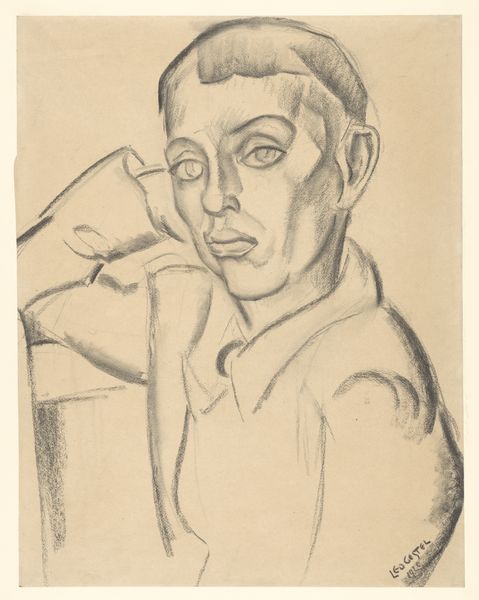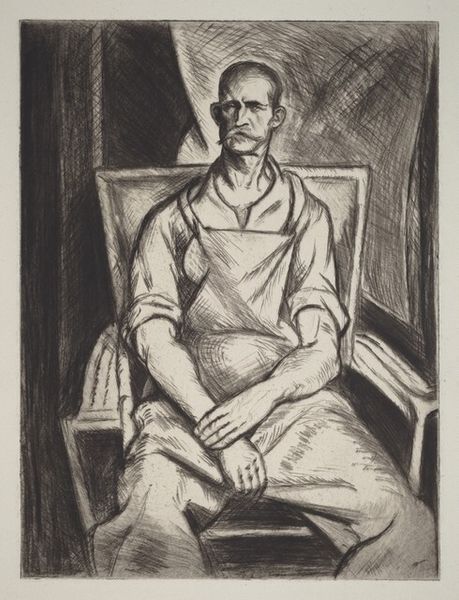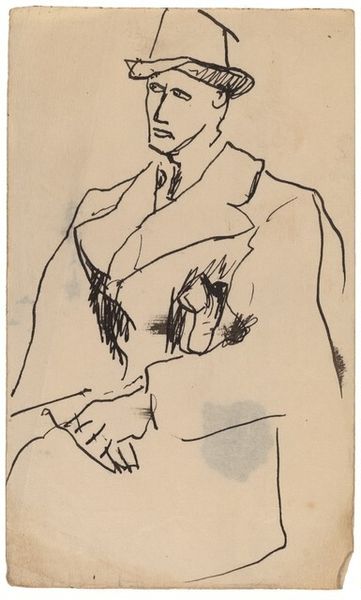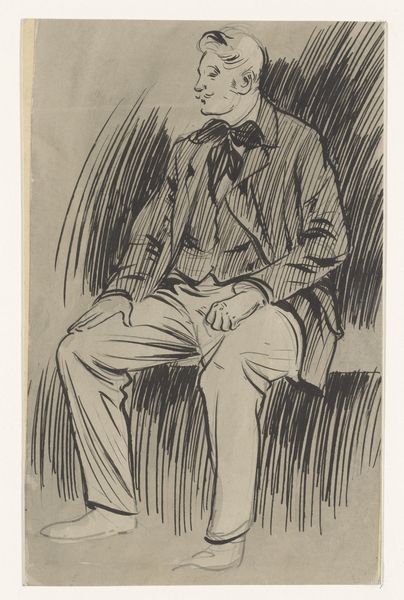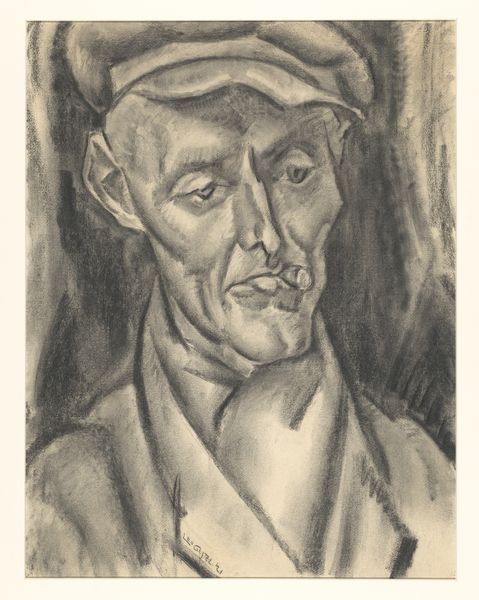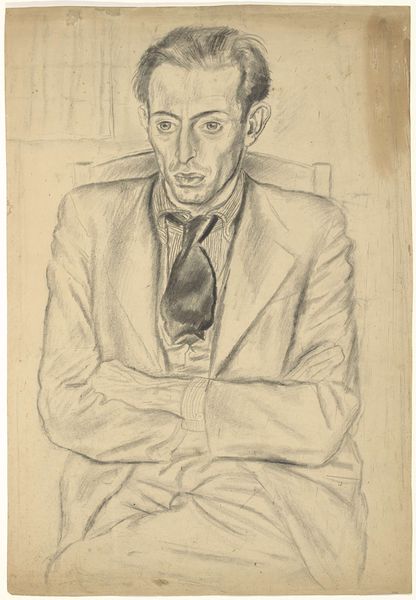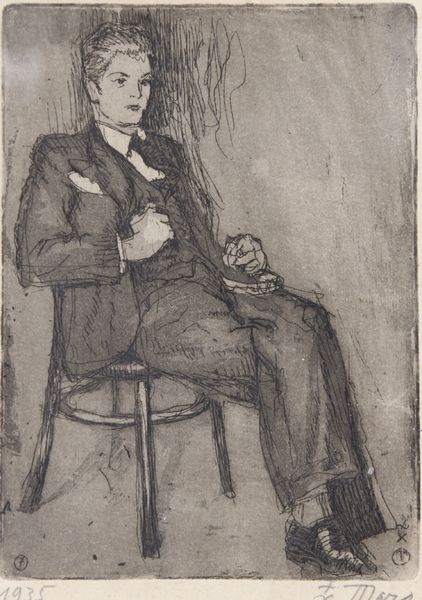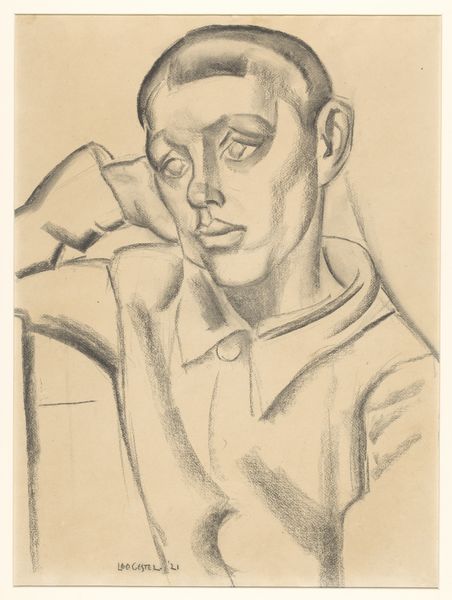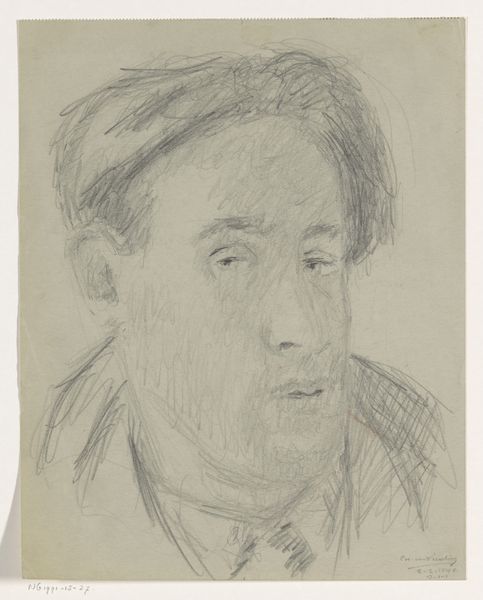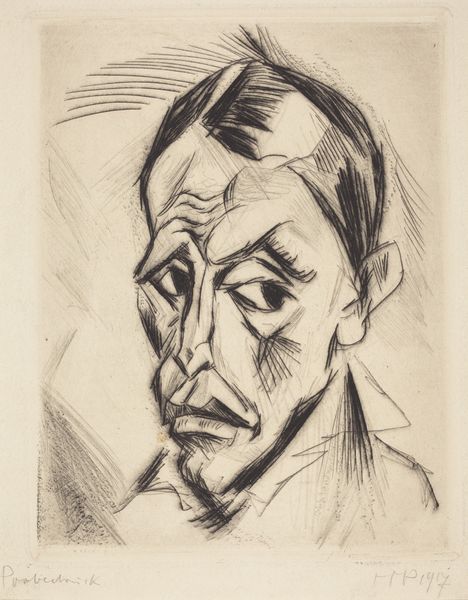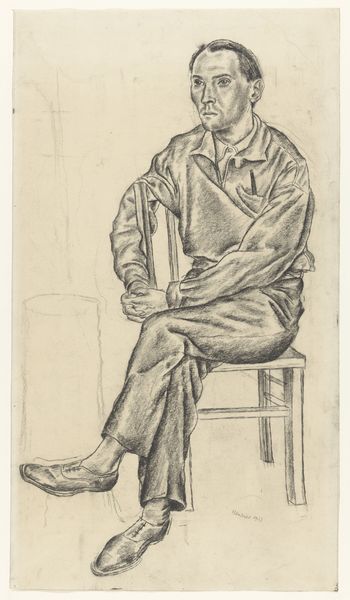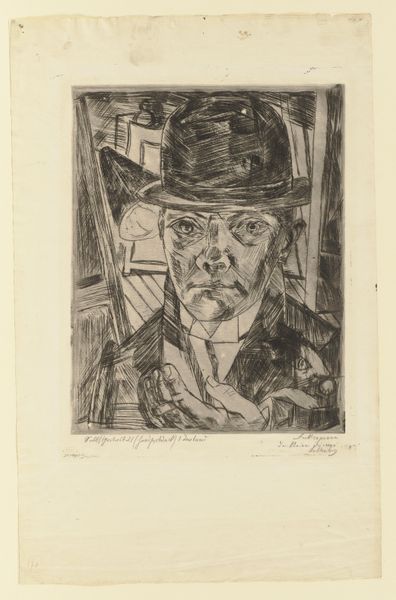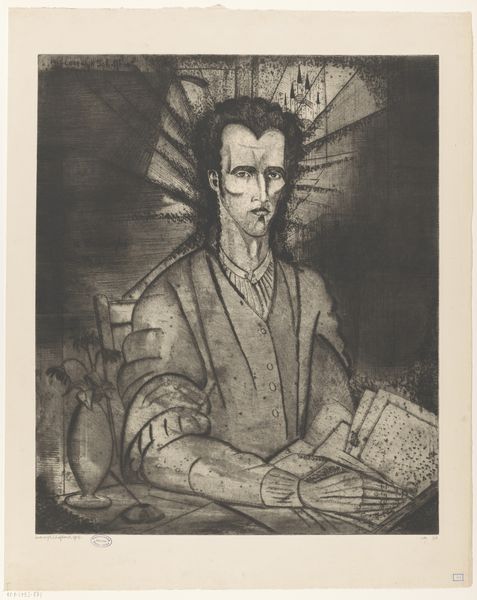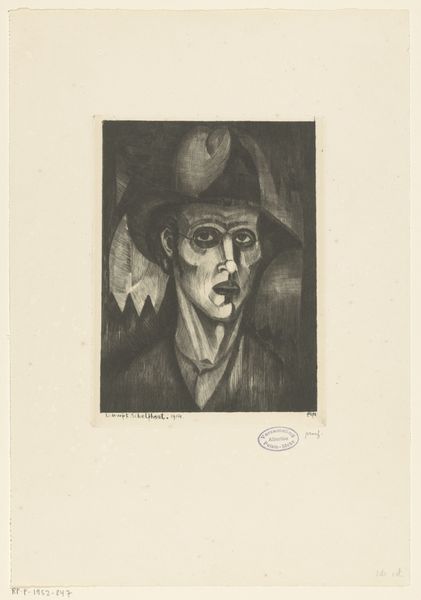
#
pencil drawn
#
facial expression drawing
#
light pencil work
#
pencil sketch
#
caricature
#
charcoal drawing
#
charcoal art
#
portrait reference
#
pencil drawing
#
portrait drawing
Dimensions: height 642 mm, width 405 mm
Copyright: Rijks Museum: Open Domain
Editor: This is "Portrait of J.W. Bijl, Sitting with Hands on Knees" by Bob Hanf, created in 1923. It appears to be a charcoal or pencil drawing. It has a somber mood and feels quite formal, with the subject's very direct gaze. What do you see in this piece, looking at it from a cultural perspective? Curator: What strikes me is how this seemingly simple portrait engages with broader socio-political dynamics of the 1920s. We see a man, likely part of the Dutch intellectual or professional class, rendered with a directness that, while formal, hints at a specific negotiation of identity and power. Consider the context: the aftermath of WWI, shifting class structures, and emerging modernist ideas. Does the portrait capture an individual or represent social status, and, if so, how? Editor: I suppose I see more of a specific individual. I mean, you could tell it's a person with certain status from the clothing and glasses. It is interesting how his hands are arranged so front and center. Curator: The hands are critical. How do they speak to contemporary feminist or class-conscious readings of art? A psychoanalyst might read the controlled hand gesture as reflecting a deep-seated need for power and control, even repression. How might we interpret the sitter’s social role through this very carefully constructed visual language of portraiture? This representation might perpetuate some societal standards for professional men. Editor: It makes me consider if this level of social commentary was intentional on the part of the artist, or rather that such conclusions are enabled by the current environment we examine the art from? Curator: Exactly. We can see both happening simultaneously. It is a reflection of our positionality. We must bring that awareness into dialogue with the past, uncovering what these works meant in their time while also understanding their implications for today. Editor: Thank you. I feel like I am getting a deeper appreciation of portraiture in general. Curator: I agree, it has offered a wider view into not just this one, but any art from this period.
Comments
No comments
Be the first to comment and join the conversation on the ultimate creative platform.
